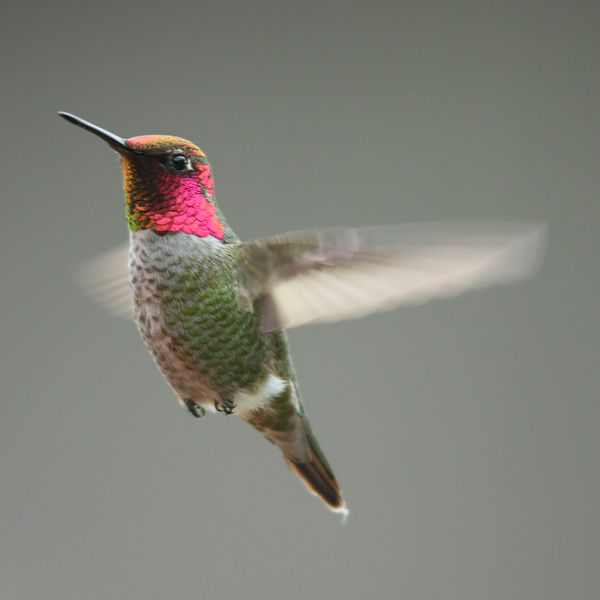
Photo credit: Alan Vernon
As I was walking back from voting on Tuesday, there was a flash of movement around a bush of gorgeous purple lupine flowers. (But don’t quote me on the flower species because I’m not an expert.) After taking a moment to stop and investigate, it turned out that the source of all the commotion was a hummingbird!
Usually, as soon as I spot a hummingbird it’s gone, but this bird just kept flitting from purple flower to purple flower scoring a major sugar fix and so I decided to stay and watch. It was only two feet away and seemed immune to my presence.
Since I was so close, this was my chance to hone my identification skills. The body was a pretty green, but the head feathers looked all black. Hhmm, not a good start, I was already stumped.
Around the Los Angeles area, the most common species of hummingbirds are Anna’s and Allen’s. And since the body was mostly green I thought it was an Anna’s, but the black head feathers threw me for a loop. Then I saw a flash of red amongst the black, which was a clue to keep waiting.
My patience paid off because as the hummingbird merged with the light at just the right angle all the head feathers transformed into a brilliant scarlet-red. And a shiny red face-mask means only one thing, a male Anna’s hummingbird. (For a great explanation of the refractive qualities in hummingbird feathers, read the “Structural Colors” section on the All About Birds website.)
I’ve never seen a male Anna’s humming bird light up like that, it was stunning. I stayed for a few more minutes and had the chance to see all the head feathers turn red again. Then the hummingbird flew off and I walked home thinking…sometimes being ignored is a beautiful thing.